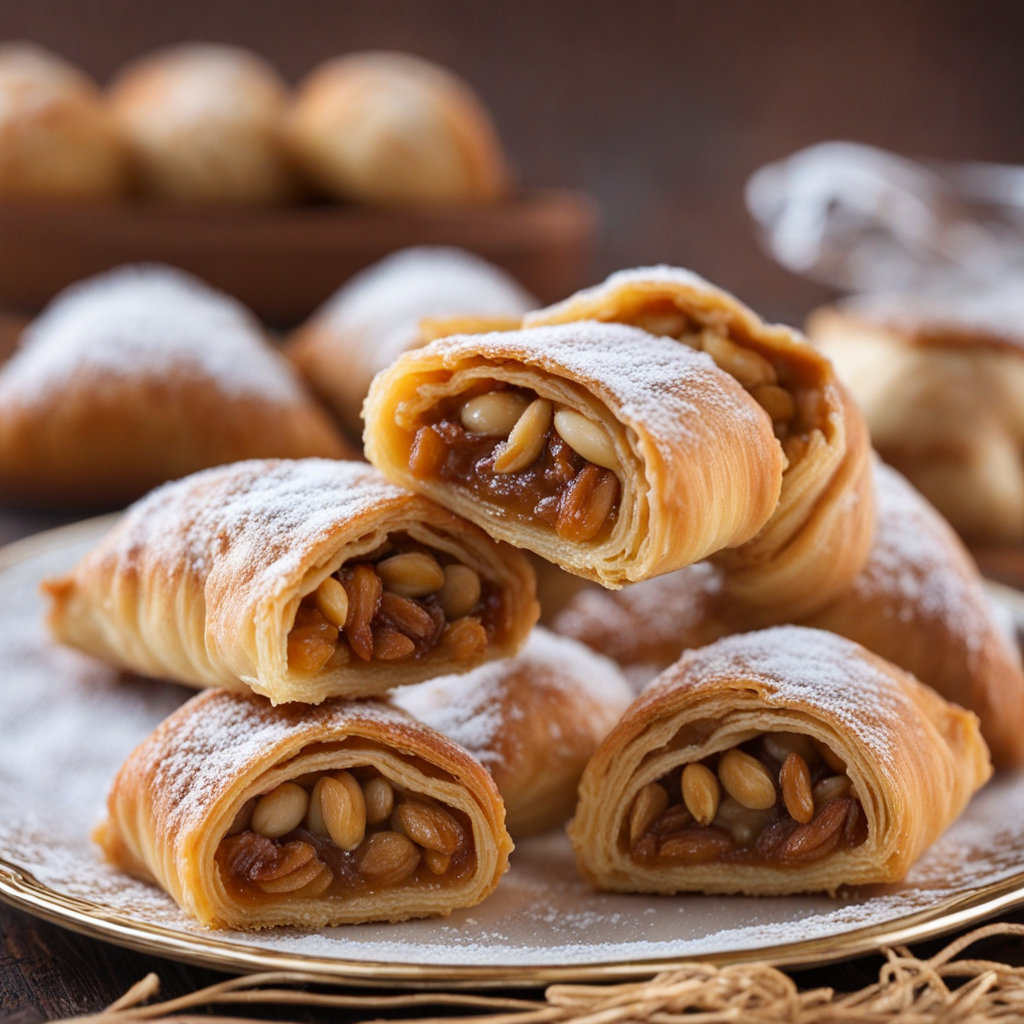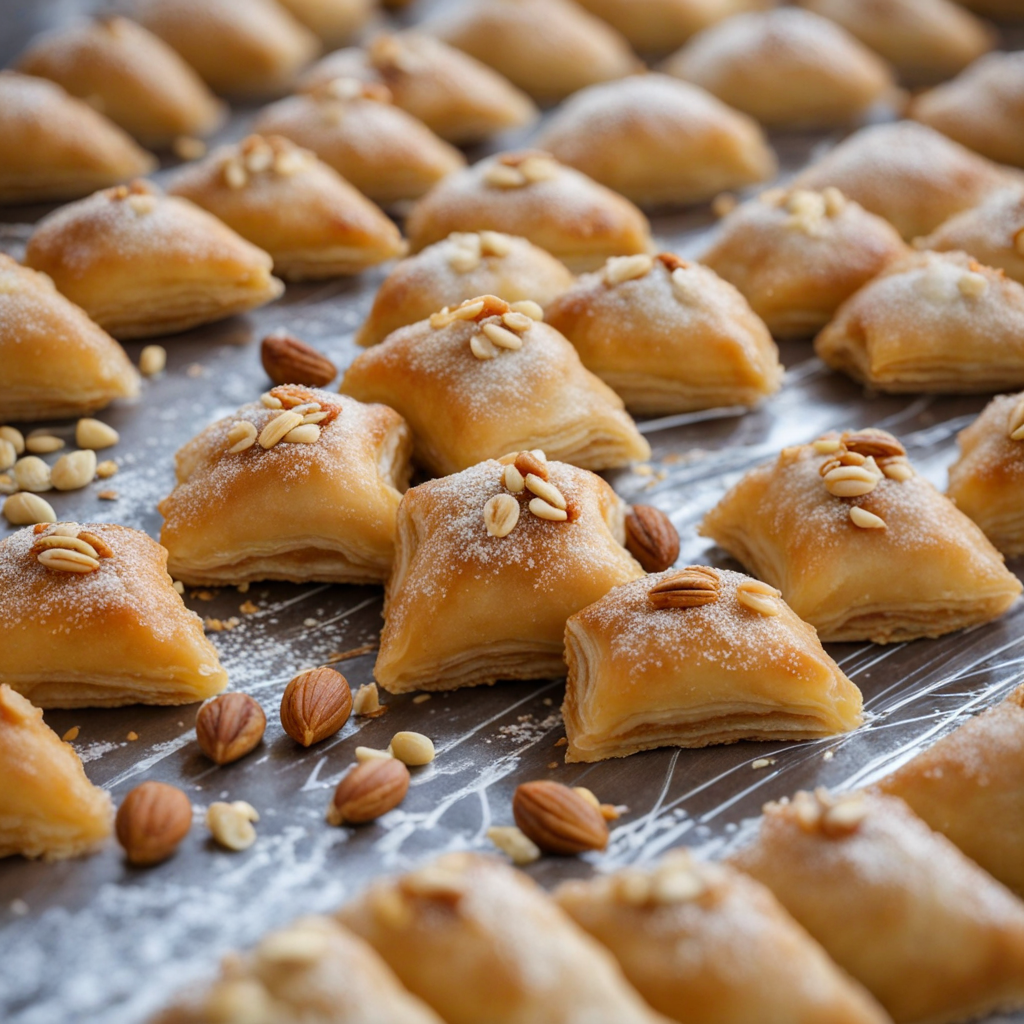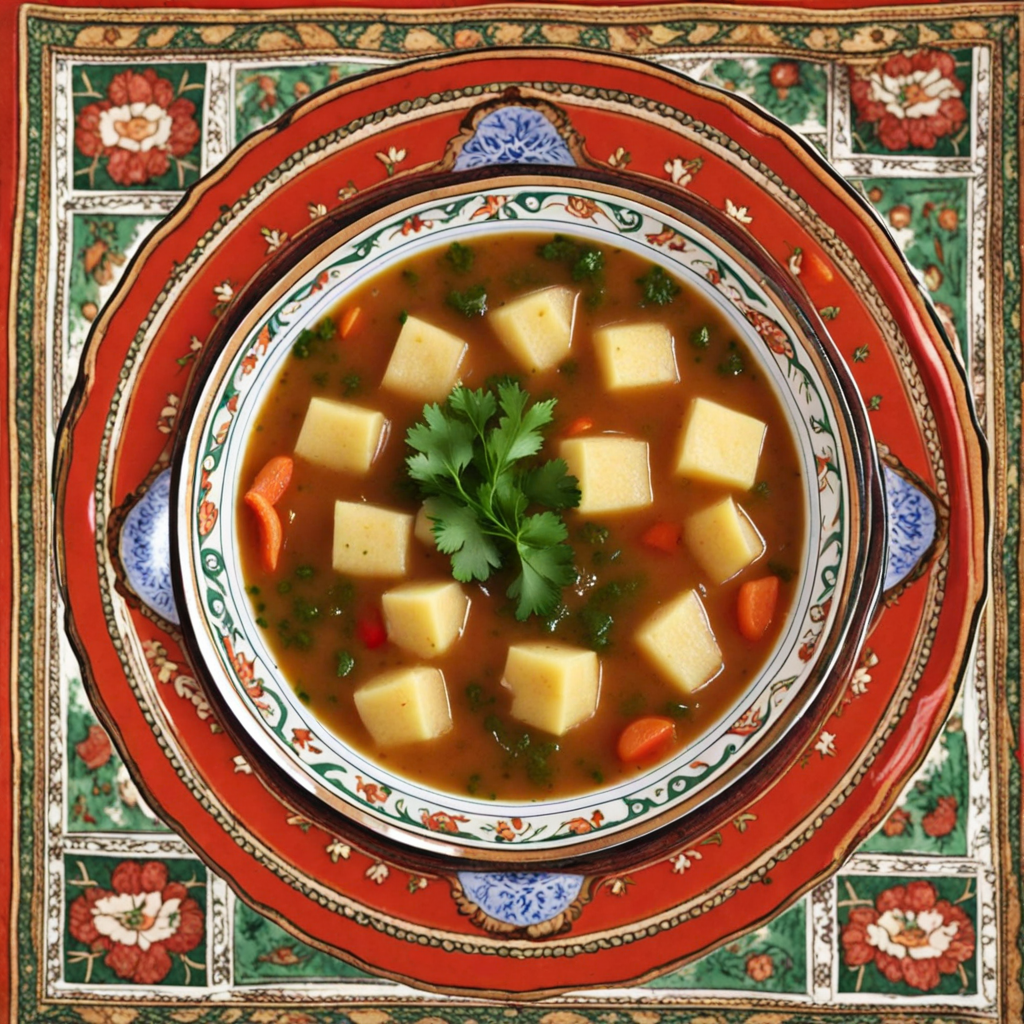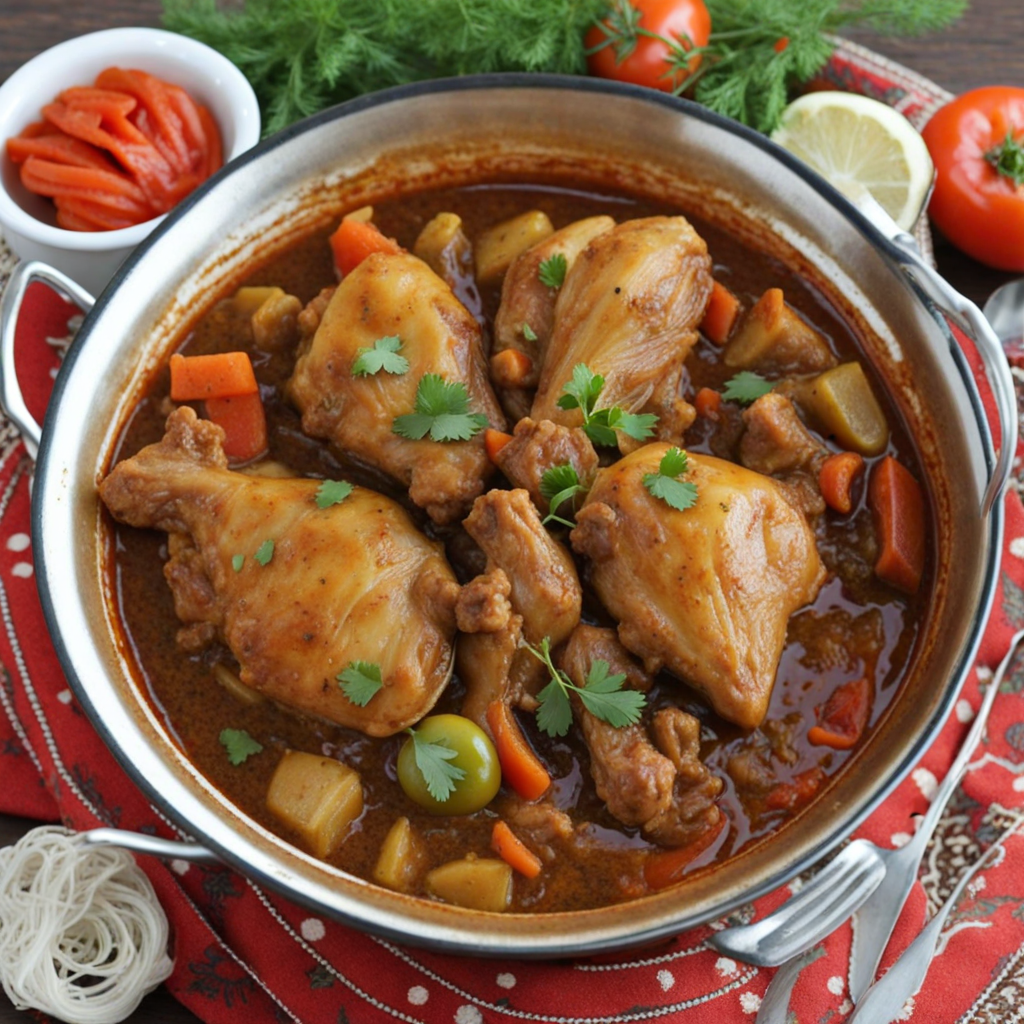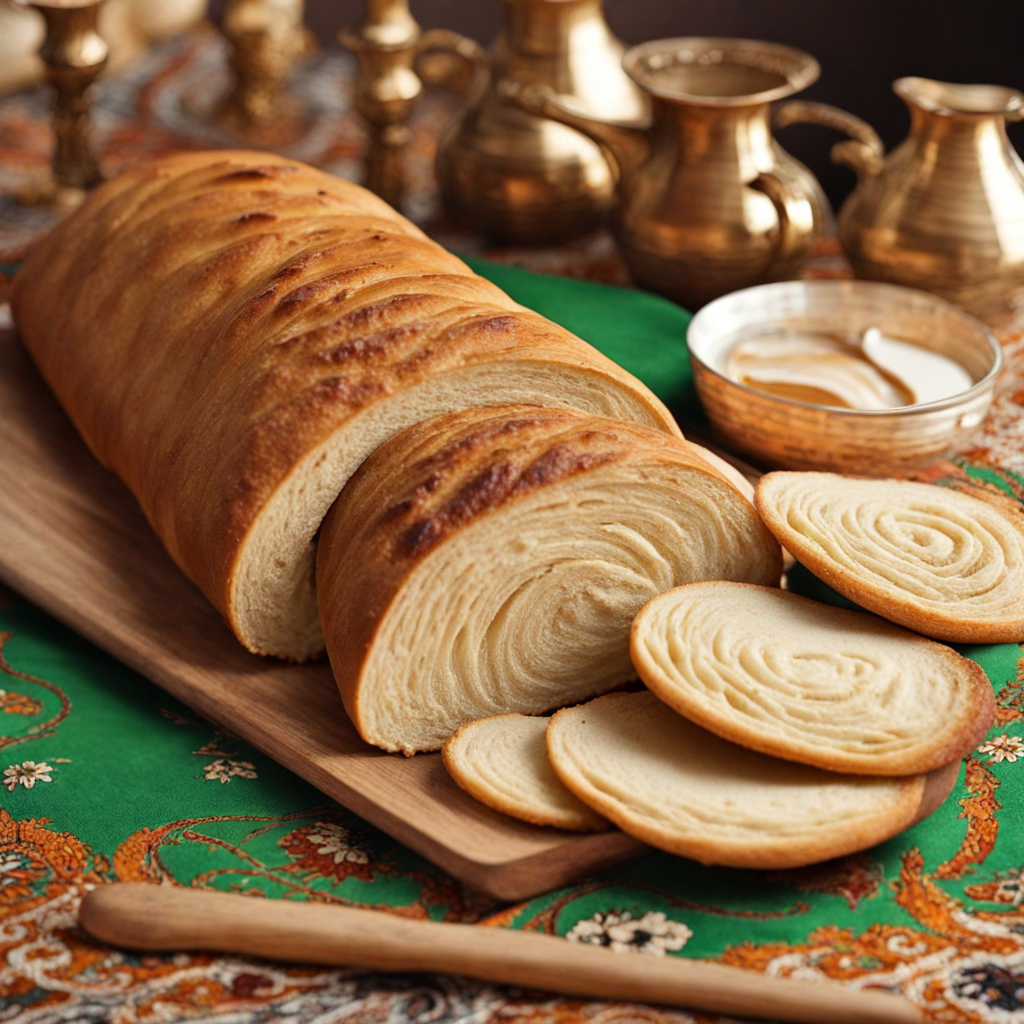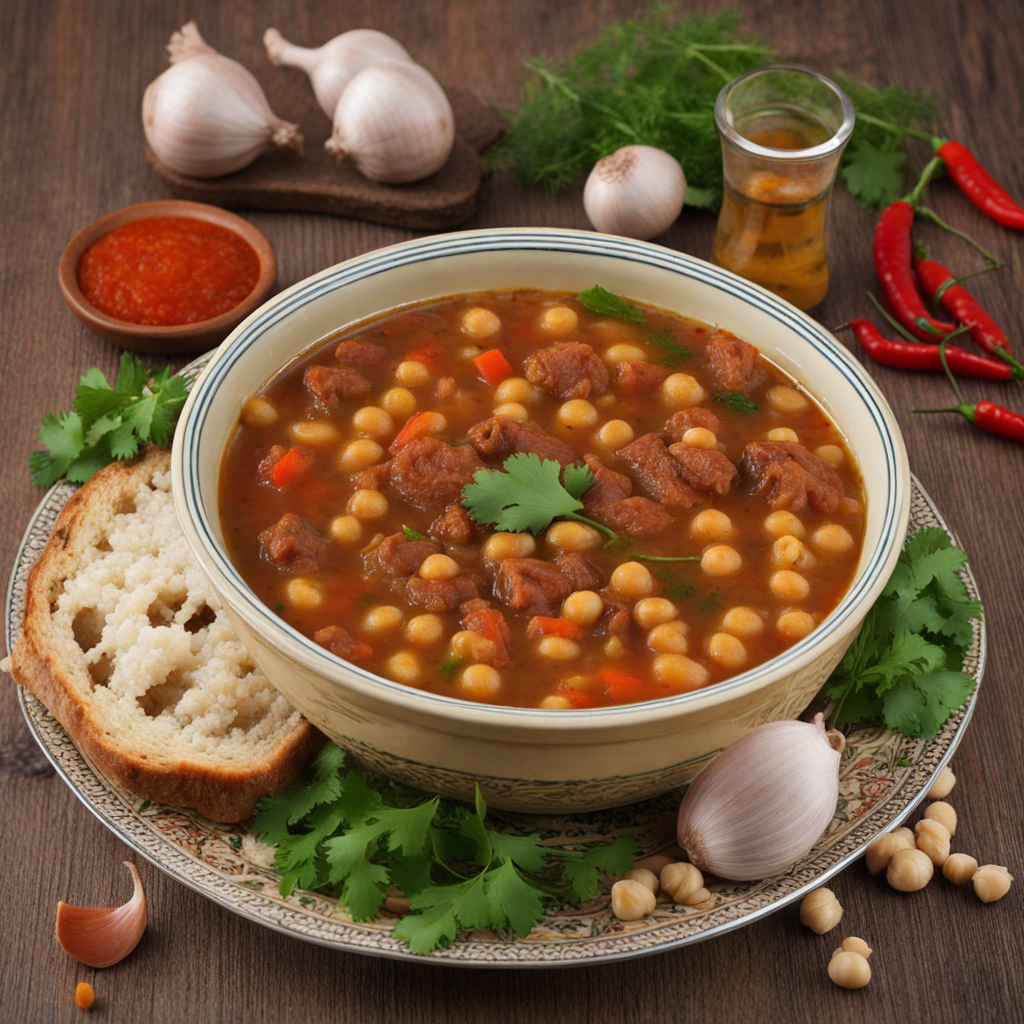Sheker Bura
Sheker Bura is a delightful pastry that hails from Turkmenistan, characterized by its sweet and nutty flavors. This traditional treat is made from a rich dough that typically includes flour, butter, and a hint of sour cream or yogurt, lending it a tender and flaky texture. The dough is meticulously shaped into a crescent or a round form, creating a beautiful presentation that is both inviting and appealing. What sets Sheker Bura apart is the filling, which is often a blend of ground nuts, such as walnuts or almonds, mixed with sugar and sometimes flavored with cardamom or vanilla, creating a fragrant and sweet interior that contrasts beautifully with the buttery exterior. When you take a bite of Sheker Bura, you are met with a delightful crunch that gives way to the rich, moist filling inside. The combination of the slightly crisp outer layer and the sweet, nutty center creates a harmonious balance of textures and flavors. It is not overly sweet, making it a perfect accompaniment to a cup of tea or coffee, and it is often enjoyed during special occasions and celebrations in Turkmen culture. This pastry is more than just a treat; it embodies the warmth and hospitality of the Turkmen people, who take pride in their culinary heritage. The preparation of Sheker Bura is often a communal activity, bringing families and friends together, which adds to its charm. As it bakes, the aroma wafts through the air, filling the home with a sense of comfort and anticipation. For those looking to explore new tastes, Sheker Bura offers a unique and authentic experience that reflects the rich traditions of Turkmenistan, inviting you to indulge in its sweet, nutty, and buttery goodness.
How It Became This Dish
The Sweet History of Шекер Бура: A Culinary Treasure of Turkmenistan #### Origins Шекер Бура, or Sheker Bura, is a traditional sweet pastry that embodies the rich culinary heritage of Turkmenistan, a country located in Central Asia. The name "Sheker Bura" translates to "sugar pie," reflecting its sweet, indulgent nature. Its origins can be traced back to the ancient Silk Road, where Turkmenistan served as a vital hub for trade and cultural exchanges between East and West. The region’s history is deeply intertwined with the nomadic lifestyles of the Turkmen people, who have been known for their hospitality and elaborate feasts. The very essence of Sheker Bura is rooted in the ingredients that are commonly found in Turkmen cooking, such as flour, sugar, butter, and nuts. The use of these ingredients reflects the agricultural practices of the region and the influence of neighboring cultures. Wheat, for instance, has been cultivated in Central Asia for millennia, and the incorporation of nuts, particularly almonds and walnuts, showcases the rich biodiversity of the area. The pastry is also often flavored with cardamom and rosewater, which were highly prized in Persian and Arab cuisines. #### Cultural Significance Sheker Bura holds a special place in Turkmen culture, often associated with celebration and hospitality. It is a staple during significant life events such as weddings, births, and religious holidays like Nowruz, the Persian New Year, which signifies the arrival of spring. During these occasions, the preparation and sharing of Sheker Bura symbolize not only the joy of the celebration but also the warmth and generosity of the host. The act of making Sheker Bura is often a communal endeavor, bringing families and friends together in the kitchen. This collaborative spirit reflects the importance of community in Turkmen culture. The pastry is typically made in large batches to accommodate the numerous guests expected during celebrations, demonstrating the Turkmen tradition of abundance and hospitality. Moreover, Sheker Bura is not just a food item; it carries cultural narratives and memories. Stories are often shared while making the pastry, passing down traditions from one generation to the next, thus fostering a sense of identity and belonging among the Turkmen people. The pastry often appears on the tables of both rural and urban settings, bridging the gap between different lifestyles while maintaining its status as a beloved treat. #### Development Over Time The recipe and preparation of Sheker Bura have evolved over time, influenced by historical events, migrations, and interactions with neighboring cultures. The pastry has roots in the ancient baking traditions of the region, but as Turkmenistan has opened up to the world, so too has its culinary landscape. In the past, Sheker Bura was primarily made using simple, locally sourced ingredients. However, with the advent of globalization, variations of the pastry have emerged. Modern interpretations may include different fillings, such as poppy seeds or dried fruits, catering to diverse palates and dietary preferences. The traditional method of hand-rolling and shaping the pastry has also seen some innovation, with modern bakers experimenting with new techniques, while still maintaining the essence of the original recipe. The globalization of Turkmen cuisine has also led to an increased interest in Sheker Bura from food enthusiasts and chefs worldwide. Culinary festivals and international food expos have showcased this delightful pastry, allowing it to transcend its geographical boundaries. As a result, it has gained recognition not only as a traditional Turkmen delicacy but also as a symbol of Central Asian hospitality and artistry. In recent years, there has been a resurgence in the interest of traditional Turkmen foods, including Sheker Bura, as younger generations seek to reconnect with their cultural heritage. This revival is evident in the growing number of cooking classes and workshops dedicated to traditional Turkmen cuisine, where Sheker Bura is often a central focus. This trend not only preserves the culinary practices of the past but also adapts them for contemporary tastes, ensuring that the pastry remains relevant in today’s gastronomic landscape. #### Contemporary Relevance Today, Sheker Bura continues to be a cherished part of Turkmen life. It is commonly found in bakeries across the country and is often gifted to guests during visits, reinforcing the cultural values of hospitality and community. The pastry has also become a symbol of national pride, representing the unique culinary identity of Turkmenistan on a global stage. Social media has played a significant role in promoting Sheker Bura beyond Turkmenistan. Food bloggers and influencers have shared recipes, photographs, and videos of the pastry, creating a sense of connection among Turkmen expatriates and fostering a curiosity among international audiences. This digital engagement has sparked a renewed interest in traditional recipes and has encouraged the preservation of culinary practices that are at risk of fading away. Moreover, Sheker Bura has found its way into the realm of fusion cuisine, where chefs experiment with new flavor profiles while respecting traditional methods. This evolution reflects the dynamic nature of food culture, where past and present converge to create something new yet familiar. #### Conclusion In conclusion, Sheker Bura is more than just a sweet pastry; it is a culinary symbol of Turkmenistan's rich history, cultural significance, and adaptability over time. As it continues to be celebrated during festive occasions and shared among families and friends, Sheker Bura encapsulates the essence of Turkmen hospitality and the enduring spirit of community. Its journey from the ancient Silk Road to contemporary kitchens showcases the resilience of cultural traditions and the ability of food to connect people across generations and borders. As Turkmenistan moves forward, Sheker Bura remains a beloved testament to the country's vibrant culinary heritage, inviting all to partake in its sweet story.
You may like
Discover local flavors from Turkmenistan


